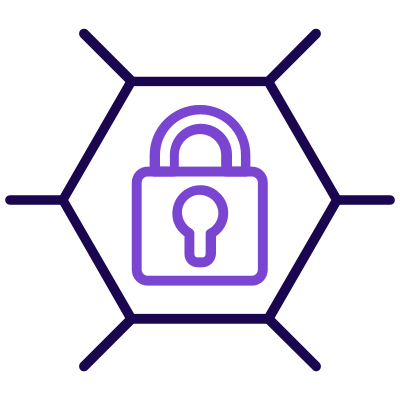Everyone knows that data is power and that it is constantly under threat. So, how do we keep it safe when breaches are happening faster than ever? The key lies in a well-constructed security policy, not just as a regulatory checkbox but as a dynamic shield against both everyday vulnerabilities and sophisticated cyberattacks.
This isn’t about vague guidelines or outdated advice – this is about practical, actionable components that will actually protect your organisation. From tighter password protocols to advanced encryption, we’ll break down the 10 basic parts of a security policy that does more than just exist on paper – it defends your business at its core.
Whether overseeing a growing startup or managing IT for a global enterprise, these insights will enable you to stay one step ahead of attackers and maintain your customers’ trust and confidence.
Building a Robust Data Security Policy: Why It Matters and What It Should Include
Data breaches and cyberattacks have become more sophisticated and damaging, with reports showing that 82% of breaches involve human error or weak security protocols (Verizon DBIR, 2023). Yet, shockingly, many organisations still don’t have the policies in place to stop these attacks before they hit. A solid data security policy is no longer a “nice-to-have” – it is the cornerstone of protecting sensitive information, ensuring compliance, and reducing risk.
We’ll look at practical strategies and real-world examples and explain why investing in a comprehensive policy is a proactive step every business must take.
What Is a Data Security Policy?
Think of your data security policy as a playbook. It outlines how your data is handled, who can access it, and the steps needed to keep it secure. It’s not just a legal necessity; it’s your first line of defense against threats, both internal and external. But here’s the kicker – a policy that doesn’t evolve is a policy that fails. With threats like AI-powered attacks becoming more common, your security measures have to adapt just as quickly.
Key Components of an Effective Data Security Policy

1. Risk Assessment and Threat Analysis: Know Where You’re Exposed
An effective policy starts with asking tough questions: What data do we hold, and who wants to steal it? Whether it’s customer information, trade secrets, or operational systems, you must understand where you’re vulnerable.
In 2024, a UK financial firm faced a £4 million fine after a phishing scam exposed over 100,000 customer records. A risk assessment could have flagged the vulnerabilities in their email system before it was too late.
The new NIS 2 Directive, rolling out in October 2024, requires businesses in critical sectors like finance and healthcare to perform regular risk assessments. Non-compliance can result in hefty fines and serious reputational damage.
2. Access Control and User Authentication: Limiting Exposure
Not every employee needs access to all the data. Access control mechanisms limit the damage a breach can cause. Whether through role-based access or attribute-based controls, limiting data access makes a breach less damaging.
Similarly, multi-factor authentication (MFA) and biometric systems ensure only authorised users get through the door. For example, a major UK university dodged a bullet by quickly rolling out MFA after an attempted breach on its network.
3. Data Encryption: Ensuring Confidentiality at All Times
Encryption is your final line of defense. If an attacker intercepts your data, strong encryption ensures it’s still useless to them. Whether it’s encrypting stored data with AES or web traffic with SSL/TLS, encrypting data at rest and in transit is essential – especially with remote work becoming the norm.
The NIS 2 Directive mandates encryption protocols for critical sectors to keep data secure in an era of increasing threats.
4. Incident Response and Disaster Recovery: Reacting to Breaches
A proactive incident response plan ensures your team knows exactly what steps to take when a breach occurs. This plan should outline the response chain, including containment, investigation, and stakeholder communication.
Disaster recovery plans focus on restoring critical systems and data. In 2023, a retail chain in the UK responded swiftly to a ransomware attack, limiting damage and keeping operations going, thanks to a well-prepared disaster recovery protocol that included secure backups and a clear communication strategy.
5. Employee Awareness and Training: Your First Line of Defense
Your people are often your weakest link, but they can also be your best defense. Regular security training – phishing awareness or good password hygiene – can close gaps that attackers love to exploit.
A study found that 74% of UK organisations believe human error plays a role in their breaches. Through continuous education and clear communication, you can turn your workforce into a strong line of defense.
6. Regular Security Audits and Assessments: Testing the System
A policy is only as good as its execution. Regular security audits and vulnerability assessments test whether your defences are working as intended.
In 2024, a healthcare provider discovered vulnerabilities in their system through a penetration test, which led to a patch that prevented what could have been a catastrophic ransomware breach.
7. Compliance with Industry Regulations: Avoiding Fines and
Reputational Damage
Ignoring regulations like GDPR or PCI DSS isn’t just risky – it’s expensive. In 2023, a European pharmaceutical company was hit with a €7.5 million fine for failing to protect patient data. Regular audits can ensure your organisation stays compliant and avoids these penalties.
And don’t forget the NIS 2 Directive: non-compliance could mean fines of up to €10 million or 2% of global turnover. But more importantly, compliance is about protecting critical infrastructure and maintaining trust.
8. Backup and Recovery: Preparing for the Worst
Data loss isn’t just about hackers; it can also come from system failures. Your policy must mandate regular, secure backups and have transparent recovery processes in place. By storing backups offsite and ensuring they’re not connected to your live systems, you can mitigate the effects of a ransomware attack or system failure.
In 2024, a logistics company restored its critical systems 24 hours after a ransomware attack, thanks to its robust backup and recovery policy.
9. Vendor Management: Holding Third Parties Accountable
Third-party vendors are often overlooked when it comes to data security. Yet, a breach in their system can be as damaging as a breach in yours. Your data security policy should include vendor management protocols that ensure third parties meet your security standards.
10. Continuous Policy Review and Update: Staying Ahead of Threats
Cyber threats evolve, and so should your policies. Regular updates based on the latest threat intelligence, new technologies, or changes in your organisation’s structure ensure you’re never caught off-guard. The NIS 2 Directive emphasises the need for continuous updates, and falling behind can be costly.
Proactive Protection Starts with a Comprehensive Policy
The cyber landscape of 2024 demands more than just compliance – it requires a dynamic, resilient approach to data security. From encryption to regular audits, every piece of your policy plays a role in defending your most valuable asset: your data.
Don’t wait for an attack to start thinking about your defense. Begin crafting or refining your data security policy today, and ensure your organisation is prepared for whatever comes next.







